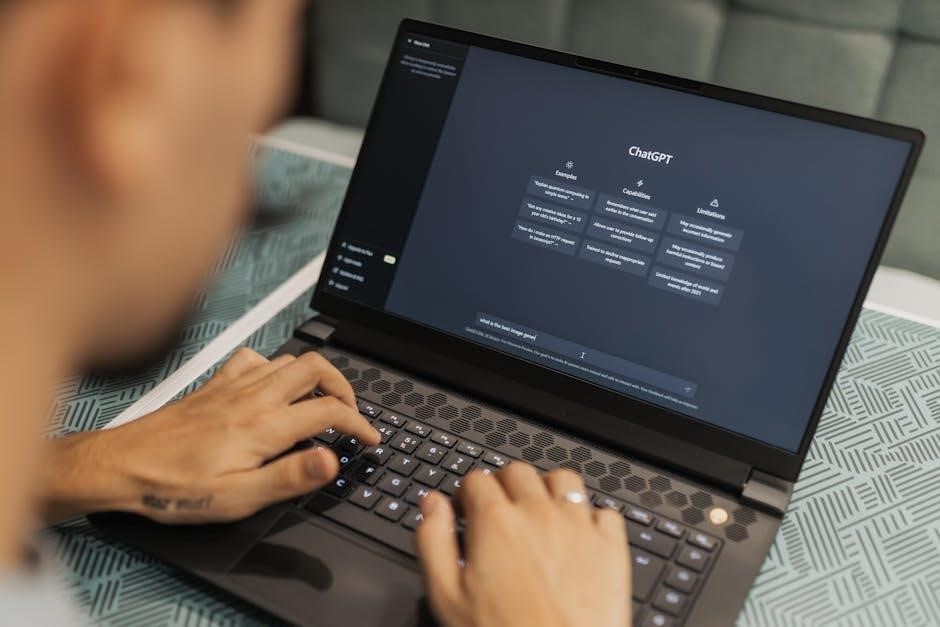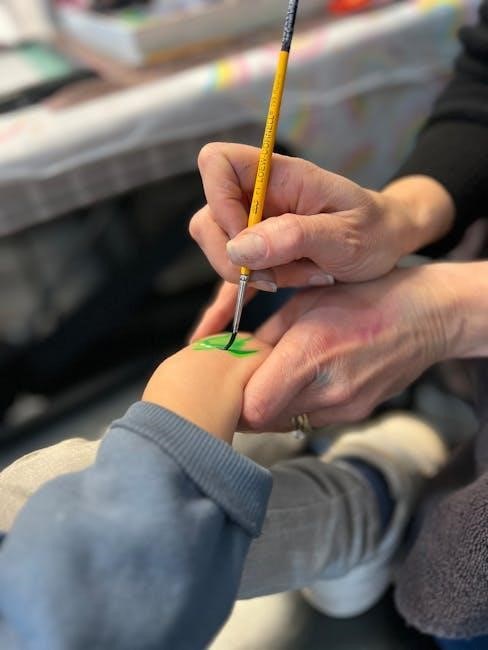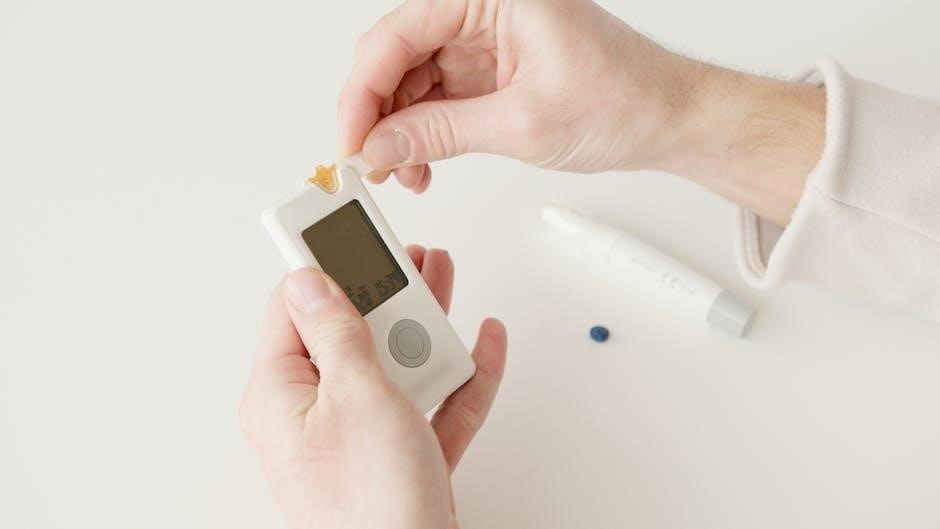RhythmStar Heart Monitor User Manual: A Comprehensive Guide
RhythmStar, a next-generation wearable cardiac monitor with cellular connectivity, facilitates rapid ECG analysis for comprehensive heart health monitoring and reporting.
Welcome to the RhythmStar, a cutting-edge cardiac monitoring device designed for comprehensive heart health assessment. Developed by RhythMedix, this next-generation wearable utilizes built-in cellular connectivity to provide rapid ECG analysis and data transmission. This manual serves as a comprehensive guide to understanding and effectively utilizing your RhythmStar monitor.
The RhythmStar empowers you and your cardiologist with valuable insights into your heart’s rhythm, enabling timely and informed medical decisions. It’s more than just a device; it’s a proactive step towards managing your cardiovascular well-being. This guide will cover everything from initial setup and operation to data interpretation and troubleshooting, ensuring a seamless monitoring experience.
What is the RhythmStar and its Purpose?
The RhythmStar is a wearable cardiac monitor created by RhythMedix, designed to continuously record your heart’s electrical activity – an electrocardiogram, or ECG. Its primary purpose is to detect and monitor heart rhythm irregularities that may be missed during a standard doctor’s visit. The integrated cellular connectivity allows for rapid data transmission, facilitating quicker analysis by your cardiologist.
This device is utilized to diagnose and manage various cardiac conditions, providing valuable data for treatment decisions. It’s intended for individuals experiencing symptoms like palpitations, dizziness, or shortness of breath, or those requiring long-term heart rhythm monitoring. The RhythmStar aims to improve cardiac care through proactive and convenient data collection.
Key Features of the RhythmStar Device
The RhythmStar boasts several key features enhancing its functionality and user experience. Foremost is its built-in cellular connectivity, enabling automatic and rapid ECG data transmission to healthcare professionals for prompt analysis. It’s a next-generation wearable, designed for continuous heart rhythm monitoring.
The device facilitates event logging, allowing users to record symptoms alongside ECG data, providing crucial context for diagnosis. Furthermore, RhythmStar supports data privacy and security, ensuring confidential handling of sensitive health information. Its integration capabilities allow seamless connection with healthcare provider systems. Developers can also integrate services via the Embedded App SDK.

Getting Started with Your RhythmStar
Begin your journey to proactive heart health! This section guides you through unboxing, initial setup, proper device activation, and correct wearing procedures.
Unboxing and Component Checklist
Congratulations on receiving your RhythmStar Heart Monitor! Carefully open the package and verify all components are present. Your RhythmStar package should include the RhythmStar device itself, pre-attached ECG electrodes, an adhesive pad for secure placement, a quick-start guide for immediate use, and the USB charging cable;
Inspect each item for any signs of damage during shipping. If anything is missing or appears damaged, immediately contact RhythMedix customer support for assistance. Retain the original packaging for potential returns or warranty claims. Proper component verification ensures a smooth and accurate monitoring experience. Do not attempt to operate the device if components are missing or damaged.
Initial Setup and Device Activation
Before your first use, fully charge the RhythmStar device using the provided USB cable. A full charge typically takes approximately two hours. Once charged, press and hold the power button located on the side of the device until the screen illuminates. Follow the on-screen prompts to select your preferred language and enter your personal information, including age and weight.
Activation requires cellular connectivity. Ensure the device is within range of a cellular signal. The RhythmStar will automatically attempt to connect to the network. Successful activation is confirmed by a message on the device display. If activation fails, consult the troubleshooting section or contact RhythMedix support.
Wearing the RhythmStar Correctly
Proper placement of the RhythmStar is crucial for accurate ECG recordings. Attach the provided electrodes to the device, ensuring they are clean and securely connected. Position the device on your chest, following the diagram in this manual. Typically, this involves placing electrodes on the left side of your chest, below the clavicle.
Ensure the skin is clean, dry, and free of lotions or oils before applying the electrodes. Avoid placing the device directly over muscle tissue. The RhythmStar should be snug but not constricting. Regularly check the electrode adhesion to maintain optimal signal quality throughout the monitoring period.

Understanding the RhythmStar Interface
The RhythmStar features a user-friendly display with indicator lights, and a navigable menu for accessing ECG data and customizing settings efficiently.
Device Display and Indicator Lights
The RhythmStar’s display provides crucial information at a glance. The screen clearly shows ECG waveforms, heart rate, recording status, and battery level. Indicator lights communicate device functionality. A solid green light typically signifies normal operation and successful data transmission. A blinking red light may indicate an error or low battery, requiring immediate attention.
A blue light often signals cellular connectivity, confirming the device is actively sending data. Understanding these visual cues is essential for effective monitoring. Refer to the troubleshooting section if lights behave unexpectedly. The display’s brightness is adjustable for optimal viewing in various lighting conditions, enhancing user experience and data readability.
Navigating the RhythmStar Menu
The RhythmStar features an intuitive menu system accessed via simple button presses. Users can cycle through options like ‘Start/Stop Recording’, ‘Event Logging’, ‘Settings’, and ‘Device Information’. The menu is designed for ease of use, even for those unfamiliar with cardiac monitoring devices.
Pressing the central button typically confirms a selection, while the side buttons navigate up and down. The display clearly indicates the currently selected option. Customization options within the ‘Settings’ menu allow users to adjust recording sensitivity and event logging preferences. Familiarizing yourself with the menu structure ensures efficient device operation and personalized monitoring.
Understanding ECG Data Display
The RhythmStar displays ECG data in a clear, waveform format on its screen. This visual representation shows the electrical activity of your heart over time. Key elements include P waves (atrial contraction), QRS complexes (ventricular contraction), and T waves (ventricular recovery).
The device automatically analyzes the waveform, and may flag irregularities. However, it’s crucial to remember the RhythmStar is a monitoring tool, and a qualified cardiologist must interpret the data. Understanding basic waveform components can aid in discussing results with your doctor. The display also shows recording time and battery level for comprehensive monitoring information.

Using the RhythmStar for Monitoring
RhythmStar enables continuous ECG recording, event logging for symptom correlation, and seamless data transmission via built-in cellular connectivity for prompt analysis.
Starting and Stopping a Recording
Initiating a recording with the RhythmStar is straightforward. Ensure the device is securely attached and powered on. Navigate to the ‘Record’ function within the device’s menu – typically accessed via the touchscreen display. Confirm the start of the recording; the device will provide visual and auditory confirmation.
During monitoring, the RhythmStar continuously captures ECG data. To stop a recording, return to the main menu and select ‘Stop Recording’. The device will save the collected data automatically. It’s crucial to log any symptoms experienced during the recording period using the event logging feature for a comprehensive analysis. Remember, consistent recording periods, as advised by your cardiologist, are vital for accurate assessment.
Event Logging and Symptom Tracking
Event logging is a critical feature of the RhythmStar, allowing correlation between recorded ECG data and experienced symptoms. When you feel a symptom – such as palpitations, dizziness, or chest discomfort – immediately use the device to log an ‘event’.
The RhythmStar prompts you to categorize the symptom and add a brief description. Detailed symptom tracking provides valuable context for your cardiologist’s analysis. Accurate logging enhances the diagnostic process, helping identify patterns and potential cardiac events. Remember to record the time of the event alongside the symptom description for precise correlation with the ECG data. Consistent and detailed logging maximizes the device’s effectiveness.
Data Transmission and Connectivity (Cellular)
The RhythmStar boasts built-in cellular connectivity, enabling automatic and secure data transmission to RhythMedix for analysis. This eliminates the need for manual downloads or pairing with a smartphone. The device utilizes cellular networks to transmit ECG recordings and event logs directly to qualified healthcare professionals.
Ensure adequate cellular coverage for reliable data transfer. The device will indicate signal strength. Data transmission is encrypted to maintain patient privacy and security. Regular, automatic uploads ensure your cardiologist has access to the most current information for accurate diagnosis and treatment planning.

Troubleshooting Common Issues
If issues arise, check power, connectivity, and electrode placement. RhythMedix support is available to address device malfunctions or data transmission problems promptly.
Device Not Powering On
If your RhythmStar device fails to power on, begin with a basic check of the battery level. Ensure the device has been adequately charged using the provided charging cable and adapter. A prolonged charging period, potentially several hours, might be necessary if the battery is completely depleted.
Next, verify the power button is being pressed and held for the appropriate duration – typically a few seconds – as outlined in the ‘Initial Setup’ section. If the device still doesn’t respond, attempt a ‘hard reset’ by disconnecting and reconnecting the charging cable while simultaneously pressing and holding the power button.
Should these steps prove unsuccessful, contact RhythMedix customer support for further assistance. A potential hardware malfunction may require professional evaluation or device replacement.
Connectivity Problems and Solutions
Experiencing connectivity issues with your RhythmStar? This device utilizes built-in cellular connectivity for data transmission. First, confirm you are within a cellular service area with adequate signal strength. Check the device display for cellular signal indicators. If the signal is weak, try moving to a location with better reception.
Ensure the RhythmStar’s cellular data plan is active and has sufficient data allowance. Contact RhythMedix or your service provider to verify account status; Restarting the device can often resolve temporary connectivity glitches. If problems persist, attempt a network reset within the device settings (refer to ‘Advanced Features’).
For continued issues, contact RhythMedix support, providing details about your location and signal strength.
Skin Irritation and Electrode Issues

Experiencing skin irritation or electrode problems with your RhythmStar? Mild redness or discomfort under the electrode sites is possible. Ensure the skin is clean and dry before applying the device. Avoid using lotions or oils in the application area; If irritation persists or worsens, discontinue use and consult a healthcare professional.
Proper electrode placement is crucial. Refer to the ‘Wearing the RhythmStar Correctly’ section for detailed instructions. Ensure electrodes have good contact with the skin. If electrodes frequently fall off, gently abrade the skin with a clean, dry cloth before application.
Contact RhythMedix support if you encounter recurring electrode adhesion issues or significant skin reactions.

RhythmStar Data and Reporting
Access your ECG reports easily, and understand the insights provided by your cardiologist. Data privacy and security are paramount with RhythmStar’s connectivity.
Accessing Your ECG Reports
Your RhythmStar device seamlessly transmits ECG data via its built-in cellular connectivity, ensuring reports are readily available. Access your comprehensive cardiac reports through the secure RhythmStar online portal, or via a dedicated mobile application, designed for convenient viewing on your smartphone or tablet.
Upon logging in with your unique credentials, you’ll find a clear and organized display of your ECG recordings, categorized by date and time. Reports are typically available within 24-48 hours of recording completion, depending on analysis turnaround time.
The portal allows you to download reports in PDF format for easy sharing with healthcare professionals or for your personal records. RhythmStar prioritizes data security, employing robust encryption protocols to protect your sensitive health information.
Understanding Your Cardiologist’s Report
Your cardiologist’s report, generated from RhythmStar ECG data, provides a detailed assessment of your heart’s rhythm and electrical activity. It will likely include interpretations of any observed arrhythmias, such as atrial fibrillation or premature ventricular contractions.
The report will also detail the duration and frequency of these events, offering valuable insights into their clinical significance. Pay attention to sections discussing heart rate variability and any identified abnormalities in the ECG waveform.
Don’t hesitate to ask your cardiologist to explain any unfamiliar terminology or findings. Understanding the report collaboratively ensures you’re fully informed about your cardiac health and treatment plan. RhythmStar’s data aids in accurate diagnosis and personalized care.
Data Privacy and Security Considerations
RhythmStar prioritizes the privacy and security of your personal health information. Data transmission via cellular connectivity is encrypted to protect against unauthorized access. Strict adherence to HIPAA regulations ensures confidentiality and compliance.

Your ECG data is securely stored and accessible only to authorized personnel, including your cardiologist and designated healthcare providers. Discord’s recent security focus highlights the importance of vendor security, and RhythMedix maintains rigorous oversight of its partners.
We employ robust security measures to prevent data breaches and maintain the integrity of your health records. Review our comprehensive privacy policy for detailed information on data handling practices and your rights.

Advanced Features and Settings
RhythmStar allows customization of recording sensitivity, event logging, and firmware updates, enhancing user control and optimizing performance for personalized cardiac monitoring.
Adjusting Recording Sensitivity
The RhythmStar device offers adjustable recording sensitivity levels to optimize ECG data capture based on individual needs and potential arrhythmias. Access the settings menu via the device interface to modify sensitivity. Lower settings minimize false positives from muscle movement or interference, ideal for active individuals. Higher settings increase detection of subtle heart rhythm changes, suitable for those with known conditions or experiencing infrequent symptoms;
Carefully consider your cardiologist’s recommendations when selecting a sensitivity level. Incorrect settings may lead to inaccurate readings. The device provides guidance on appropriate levels based on user profile and monitoring goals. Regularly review and adjust sensitivity as your health status evolves, ensuring optimal performance and reliable data for accurate cardiac assessment.
Customizing Event Logging Options
RhythmStar allows personalized event logging to correlate symptoms with ECG recordings. Through the device’s menu, users can define custom event types – such as palpitations, dizziness, or chest pain – for precise tracking. Assign descriptive labels and set logging durations to capture relevant data during specific episodes. This feature enhances the value of reports for your cardiologist.
Configure automatic event logging triggers based on heart rate thresholds or detected arrhythmias. Customize notification settings to receive alerts when events are logged or require immediate attention. Regularly review and refine event logging options to align with your individual health concerns and monitoring objectives, maximizing the device’s diagnostic capabilities.
Firmware Updates and Maintenance
RhythmStar’s performance and features are continually improved through firmware updates delivered over its cellular connection. The device will automatically prompt you when updates are available; ensure a stable connection during the process. These updates enhance ECG analysis accuracy, optimize battery life, and introduce new functionalities.
Regularly clean the device and electrodes with a soft, damp cloth. Avoid harsh chemicals or abrasive cleaners. Inspect the electrodes for wear and tear, replacing them as needed to maintain optimal signal quality. Store the RhythmStar in a cool, dry place when not in use, protecting it from extreme temperatures and direct sunlight for longevity.

